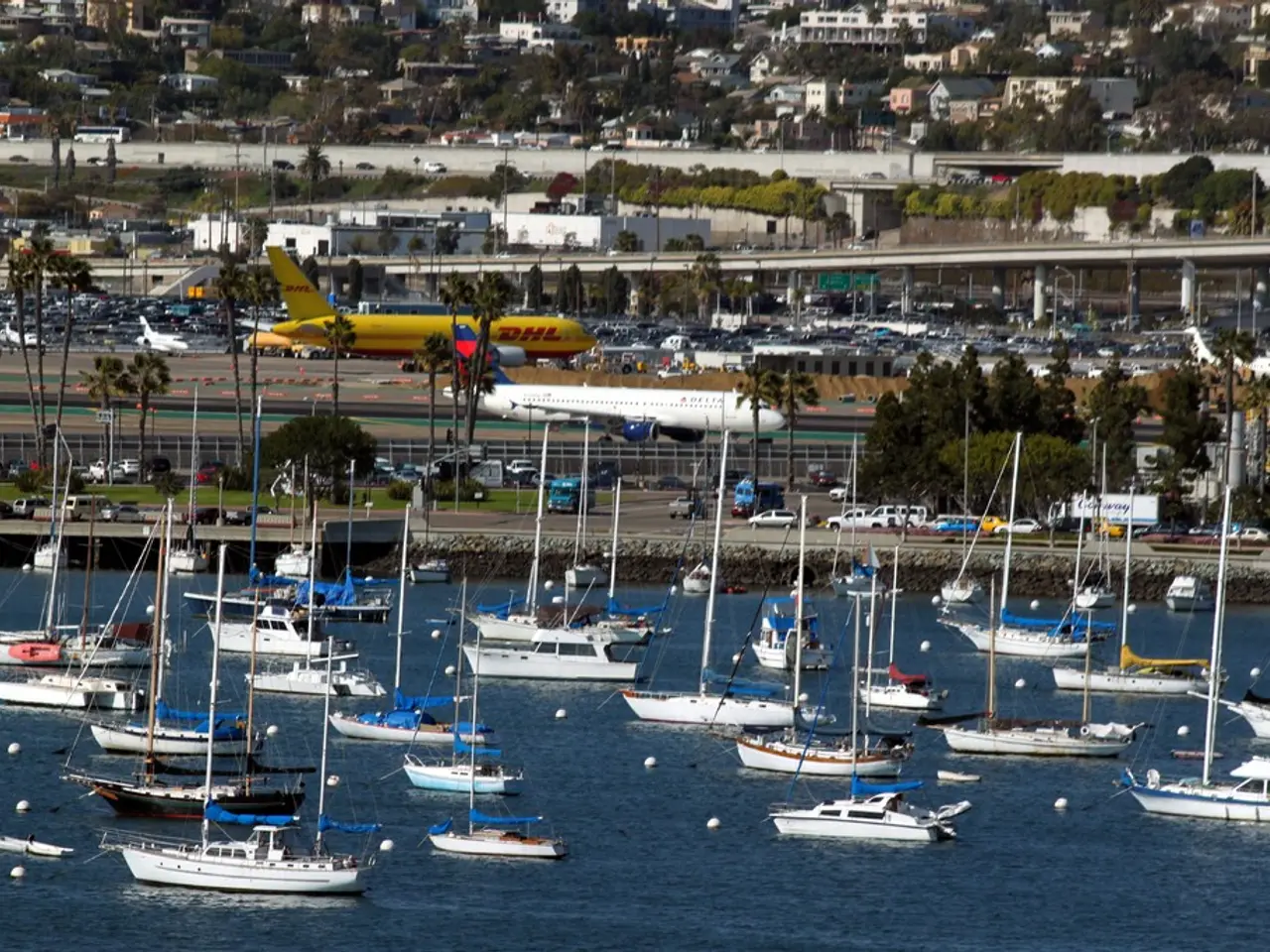Geographic Information Systems Specializing in Hydrology
The world is witnessing a significant growth and technological advancement in global geographic information networks, particularly in the realm of hydrographic data and vessel traffic management systems.
In the Asia-Pacific region, the Geographic Information System (GIS) market is projected to reach USD 19.48 billion by 2030, with China leading the charge due to investments in smart cities and 5G infrastructure. This region is experiencing a strong push towards advanced GIS infrastructure.
In maritime contexts, connected ship technologies, including vessel traffic management systems, are expanding rapidly. The connected ship market is expected to grow from USD 3.80 billion in 2025 to USD 6.64 billion by 2030, driven by International Maritime Organization (IMO) e-navigation mandates and the introduction of new hydrographic S-100 standards starting 2025.
Autonomous Surface Vessels (ASVs) dominate the emerging autonomous vessels market, with a 64.5% share in 2025 and a forecasted growth of 13.1% CAGR until 2032. ASVs leverage GPS, radar, and satellite communications for navigation and monitoring, making them crucial for modern maritime GIS operations and vessel traffic management.
Future developments include the rollout of 5G and low Earth orbit (LEO) satellite constellations, enabling real-time mobile GIS analytics for autonomous vehicles and maritime operations. Adoption of hybrid cloud GIS deployments is increasing, combining scalability with data sovereignty compliance. Advances in artificial intelligence and machine learning are expected to impact hydrographic data analysis and vessel traffic management systems, improving prediction, anomaly detection, and operational efficiency.
IMO's increased focus on carbon intensity reduction is accelerating sensor integration onboard vessels for environmental monitoring, an aspect tightly integrated with vessel traffic management systems and global maritime GIS.
The Baltic Region-wide GIS initiative, launched in 1996, brought together the Helsinki Commission, national mapping authorities, and Upsala University's University GIS Network. This project was funded by the European Union under the Baltic Sea Region Initiative.
Vessel traffic management is defined as the set of efforts to minimize risks for safety and the environment while maximizing the efficiency of water-borne and connecting modes of transport. The International Hydrographic Organization (IHO) has established a powerful, modern GI data standard for digital hydrographic data called the Transfer Standard for Digital Hydrographic Data (Special Publication S-57).
The European Union is studying the potential of VTMIS to enhance maritime transport and has established a project on a VTMIS Information Network. VTMIS includes logistic information, traffic information (land/sea), navigational information and warnings, meteorological and current data, and ice information.
Hydrography, traditionally a service for navies and merchant fleets, has expanded its functions under the UN Convention on the Law of the Sea (UNCLOS) to include claims of maritime boundaries, marine environmental monitoring, use of the Exclusive Economic Zone (EEZ), and management of living and non-living marine resources.
Real-time positioning is now possible with the Global Positioning System (GPS) and digital survey methods. Coastal Zone Management links seaside and landside, relating spatial administration, traffic management, and economic development. Vessel Traffic Management and Information Services (VTMIS) aim to facilitate vessel traffic management, distributing relevant information to actors involved in real-time and retrieval modes.
In summary, global geographic information networks for hydrographic data and vessel traffic management are rapidly evolving, driven by advances in AI, autonomous vessel technology, 5G and satellite communications, and stringent international maritime regulations. These trends point to more integrated, data-rich, and automated global maritime information systems over the coming decade.
- The safety of navigation in the coastal zone management of various regions is projected to benefit significantly from advancements in science, technology, and data-and-cloud-computing.
- Climate-change and environmental-science research is becoming increasingly important in maritime boundaries dispute resolutions due to the UN Convention on the Law of the Sea (UNCLOS) and the management of living and non-living marine resources.
- In the travel industry,updated weather information from advanced meteorological systems will be crucial for voyage planning and safety, especially with the rise of connected ship technologies.
- Emerging technologies like sports simulators can leverage hydrographic survey data and dual GPS-GLONASS monitoring to create realistic virtual environments for training purposes, improving maritime safety and vessel management skills.
- As the world embraces the lifestyle changes offered by technological advancements, there will be an increased focus on integrating smart systems for responsible resource management, such as with Vessel Traffic Management and Information Services (VTMIS) and Coastal Zone Management.
- The future of maritime borders, environmental monitoring, and traffic management systems will be shaped by the continuous growth of 5G and low Earth orbit (LEO) satellite constellations, enabling real-time geospatial analytics and boosting efficiency in the maritime sector.




